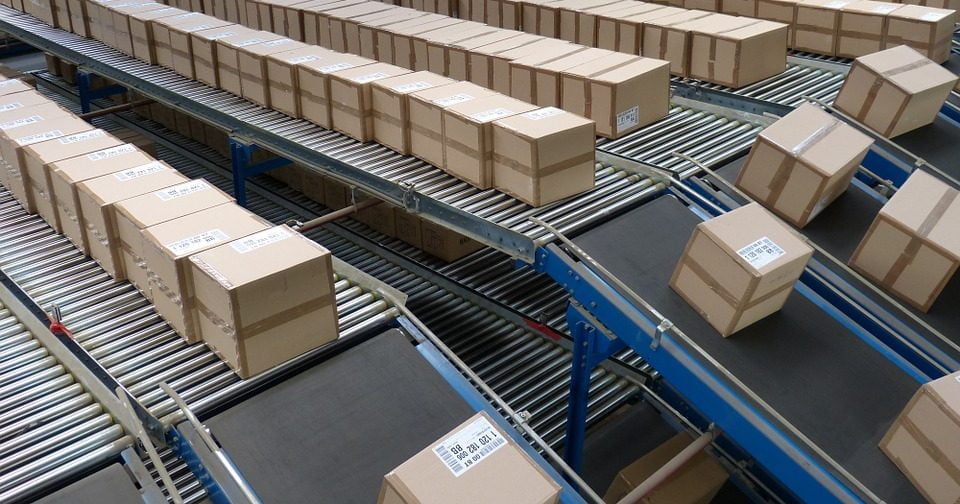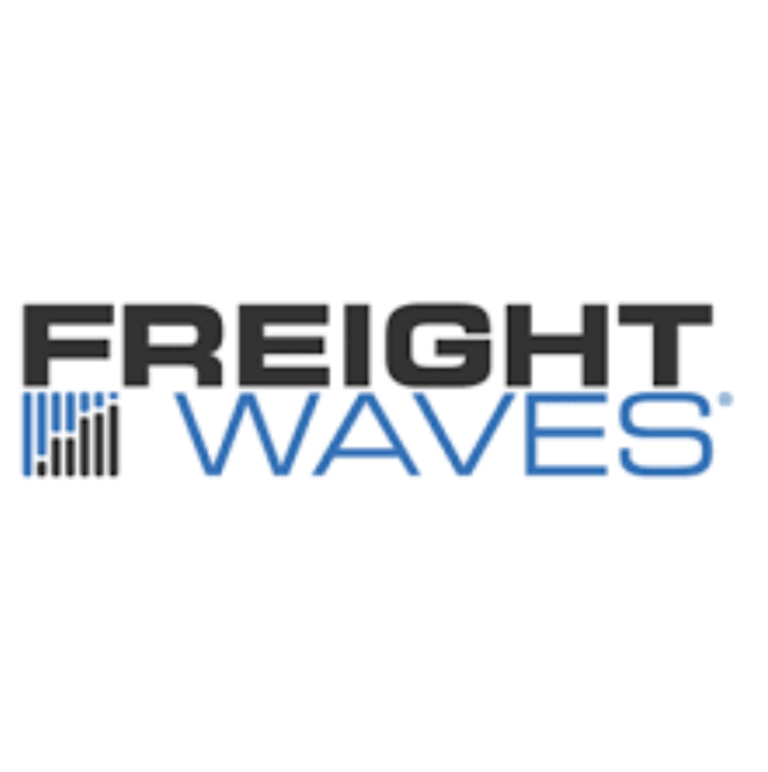Unpacking Packaging Costs
Packaging is everywhere. Almost everything that we buy comes packaged in some form. New cars are packaged in protective films for transport. The jeans on the store shelf came in a corrugated paperboard box. Even the fresh fruit at the farmer’s market arrived in a box, and you took it home in a bag.
The trend of the YouTube unboxing videos is driving new attention to packaging. The unboxing experience, along with a quick initial review of the product by product influencers, is becoming a decision point for consumers. While Amazon drives the marketplace with 2-day delivery, a significant portion of ecommerce platforms is shifting focus from rapid delivery to enhancing the unboxing experience as a differentiator to Amazon. A recent Gartner/L2 report about activewear ecommerce brands highlights innovators who put more effort into the packaging and unboxing experience, using branded shipping boxes with custom interiors that are easy to open to win repeat customer loyalty.
Are the days of the plain brown box going away? Not hardly. However, different pressures from different directions are driving supply chain managers to rethink the value and costs of packaging. The perception of waste, the conservation of resources, innovative new applications of flexible packaging, plastic pouches replacing glass jars, foil wraps replaced by biodegradable films, materials obsolescence created by ingredient and labeling changes, all are driving more real cost into supply chain.
This white paper is a primer for managers who do not work with packaging as a core part of their job. Our goal is to help these managers understand the purpose of packaging, the forms of packaging, and the drivers of packaging costs. Packaging costs can be as high as 15% of the cost of the product in the package, perhaps higher if not managed. While packaging costs for traditional high-volume grocery and consumer goods is more like 1% of the cost of the product, the nature of the marketplace is changing.
Packaging adds value to the product in both visible and invisible ways. Packaging also adds cost to the manufacture and distribution of products. If the protection is insufficient to prevent damage in transit or storage, product costs increase. If the packaging provides consolidation that is ill suited for the mode of distribution, costs increase. Improper marking and identification create inventory inaccuracy, which increases costs. If the instructions, safety warnings or the ingredient lists change, costs increase.
Supply chain procurement managers are the most attuned to these costs. So are the managers of fulfillment and distribution centers. However, very few managers have a complete view or exposure to all the costs of packaging throughout a product supply chain. In total, based on our research, poor packaging management can create costs throughout the product supply chain that are as much as half of the cost of the product itself.
The goal of this article is to provide any supply chain manager the insight into the total packaging costs throughout a product supply chain. The company making a product may not directly pay for all the costs mentioned in this article, but the costs are real, and product managers who pay attention to optimizing the packaging costs in the supply chain contribute more value to the product, and the end consumer of the product.
The Five Primary Functions of Packaging
From candy to medical devices, hardware to books, packaging provides consumers and users with value beyond the basic value of the product, including the following functional services:
- Protection: Protecting the product from damage in shipping, from the weather, from contamination, and protecting people from harm from the product.
- Handling: Packaging improves distribution and transportation efficiency by consolidating multiple products together into a single container. The case of six in the warehouse is one example. The grocery bag holding your beer, steak and bread is another.
- Identification & Marketing: Printed packaging helps identify the product to the consumer, even if the package is a plain box with a label that identifies what is in the box. Printed packaging creates differentiation on the store shelf.
- Instruction & Value: Packaging includes instructions for use, quantity and weight in the package.
- Legal, Regulatory and Trade: Printed packaging provides a place for the display of legal requirements, such as safety warnings, ingredient lists, nutritional values, pricing, barcodes, manufacture date, sell by date, and other information required to sell the product.
Seven Steps to Reduce Packaging Costs
Step 1: Define Your Requirements – Five Groups of Questions to Ask
This section highlights the fundamental questions that a good manager should ask when developing the packaging for a product. By asking these questions, managers can develop packaging programs that deliver value for all parties in the supply chain.
The list of questions below is actually five groups of many questions. The list is not exhaustive, but focuses on the kinds of questions managers should ask to create criteria for good package design.
What type of packaging does the product require?
- What is the product’s physical properties? Is it a liquid, solid, or powder?
- Is the product heavy? Light? Does it have sharp corners or fragile components?
- Does the product need to stay in a specific orientation?
- How much of the product will be put in the smallest form of package?
- What are the selling channels? (Retail, ecommerce, wholesale, industrial)
- How much product consolidation is needed? In what forms and what stages of distribution?
- Does the package need to provide a display of the product?
- What information must be on the outside of the package?
- How much protection does the product require on the shelf? In the warehouse? In transit?
- Once opened, does the packaging need to reseal to protect the contents?
- Does the packaging need to keep components separated until point of use?
What environment will that package be exposed to?
- How cold, hot, humid or dry?
- Exposure to sun, wind, rain, snow, sand, salt?
- How will it transport? In what quantities? What modes?
- How will the product be stowed?
- What is the expected shelf life for the product?
- Does the packaging need to keep the contents warm/cold? For how long?
What types of materials can we use?
- Does the package need to integrate dunnage for product protection?
- What will be the preferred disposal method after use? Dump, burned, or recycled after use?
- Does the package need to be made of recycled materials?
- How will the end user dispense of or open the package? What tools does the user need?
- How heavy can the packaging be?
- How much cubic volume around the product is needed?
- What space is available in the plant for packaging storage?
- What kinds of packaging machines are available at the plant?
How creative can we be with design?
- What are the budget limitations for the product production costs?
- What are the capital budget constraints?
- What packaging requirements/standards do our wholesale/retail customers have?
- What are consumer expectations of the packaging?
- What are the capabilities of the packaging suppliers?
- What are the capabilities of our manufacturing plants/partners?
- What kinds of innovation do our competitors deploy in packaging?
- How important is image differentiation on the retail shelf?
- How much shelf space is allocated for the product?
- Where on the shelf does the product belong?
- What is the image expectation for retail display? For warehouse storage?
What quality and regulatory standards does the packing need to meet?
- What information must appear on the package as required by regulation or law?
- What tamper resistance/prevention/indication is required?
- What forms of automated ID are required by retail/wholesale/OEM customers?
- What are regulatory restrictions for package size and construction?
- How many countries/jurisdictions will the product distribute into?
Step 2: Optimizing for Cost Reduction – Choosing Your Options
Answering the questions in Step 1 helps you to define your packaging needs and helps to uncover your options. In Step 2, you start to make decisions about what options to investigate.
When making the first decision, consider the problems you need to solve with your packaging. There are three basic types of packaging: utility, branded and boutique.
Utility Packaging –
This is typically packaging that provides product protection and consolidation. Often considered a commodity, basic packaging is often off-the-shelf or mass produced with no decoration or printing.
Utility packaging can be as simple as a heat sealed or zipper sealing plastic bag with a label or card that holds hardware. Basic Regular Slotted Container (RSC) brown cardboard boxes, brown kraft paper bags, manila envelops, bushel baskets, or clear poly bags are examples of utility packaging.
Unit cost, protection and consolidation are the primary missions. Typically, there are no special tooling or printing costs for utility packaging. Utility packaging is typically the outer case and shipping carton used for retail products or industrial products. Utility packaging maintains
medical supplies or equipment in sterile condition.
Because of the off-the-shelf nature of utility packaging, it is quick to implement, often in just days after deciding what packaging to use. Small brands use utility packaging combined with applied labels to create a branded effect without the associated costs. Blow-Molded Low-Density Poly Ethelene (LDPE) bottles are an example of utility packaging for liquids, like milk cartons, where the brand is of minor importance.
Branded Packaging –
This is the type of packaging used when product image matters. Branded packaging typically costs more than utility packaging, even if it is based on utility structures, because of the cost of printing the brand information on the packaging.
Branded packaging always involves the up-front costs of creating the artwork to print on the container, the plates and dies needed. Branded packaging typically uses four color process color printing – CYMK (for Cyan, Yellow, Magenta and Black) and a combination of solid color inks.
Branded boxes usually are paperboard card stock, typically 13pt-18pt in thickness, either bleached or unbleached paperboard.
Because of the up-front costs for printing plates and box cutting and forming dies, it can take between two to four months to develop the paperboard boxes. Flexible packaging components like pouches and overwraps can take longer to develop because of the variety of films and plastics used to build the package structure, let alone the artwork printed on the package.
Branded packaging comes in many forms and colors. For liquids, Blow Molded High-Density Poly Ethelene (HDPE) with multicolor labels or direct color printing is often used with different pump and flip lids for dispensing. Glass jars and bottles with paper labels and colored metal and plastic lids provide additional options for differentiation on the retail shelf.
In most cases of branded packaging, the production for the packaging itself is integrated into the fill process, where mechanical box folders or plastic blow-molding machines form the package and inject the product into the container. Daily production runs in the tens of thousands help lower the cost per unit. Because of the order volumes of the branded packaging components and the machinery used, the cost per unit is the lowest of the three types of packaging.
Boutique Packaging –
High end, custom luxury goods with significant gross margins justify the cost of boutique packaging. The cost can be unlimited. If the cost of the product is over $100, a packaging cost of $5 is only 5% of the product cost. If the product sells for $300, a $5 box is just a sliver of the consumer’s cost.
Boutique packaging is used when the unboxing experience is intrinsic to the consumer’s perception of value of the product. The customer’s value is not restricted to perceived value, where boutique packaging can be extended to packaging of industrial goods. There are examples of industrial packaging providing installation value or organization of a very expensive machine, where the packaging not only protects the machine, but provides organization or special tooling and support of components in the installation and commissioning process. Examples include the use of packaging components that help align printer heads for 3D printers, support for the installation of accessories in milling machines, and packaging dunnage as spill capture in machine setup.
Just as the costs for boutique packaging can be high per unit, the time needed to develop can be extensive. Time is money, and the development of boutique packaging can take anywhere from three months to a year. Usually deployed in short run models, boutique packaging allows product developers to create custom packaging messages for the individual customer who buys the product, either through the placement of personalized message inserts, or even the printing of a personalized message on the packaging itself.
Step 3 – Determining Necessary and Unnecessary Costs
All packaging must deliver on the five primary functions listed at the beginning of this article. How the packaging delivers these functions affects the cost of the packaging.
As an example, consider a retail grocery product. Does the package on the shelf need to be strong enough to provide support for tall stacking of goods in the retail setting, like stacks of cans on the shelf? It is difficult to stack glass jars without increasing the risk of breakage. Pouches typically do not stack. The material used to case pack cans does not have to have a high stack stiffness, as the cans provide vertical strength to support the weight. But the material used for glass jars, or for cases of pouches may need to be much stronger, as the products do not provide internal support for the cases.
For ecommerce shipping containers, an RSC box may be the lowest cost solution, if the product in the shipping box fits tightly within the box. However, most ecommerce shipping boxes must fit a wide variety of products. Many shippers use internal carton dunnage, like air pillows, shredded paper or bubble wrap to void fill the space in the shipping carton. Some ecommerce shippers add internal spaces in the box design to eliminate the need for void fill, increasing the cost of the box, but eliminating the cost of the void fill materials, for a lower total cost.
Determining the handling duty of the packaging is just one of many necessary vs. unnecessary evaluations for packaging costs. Box structure construction is another example. While an auto-bottom carton may cost more, it may offset the cost of the labor to assemble the alternatives. For short run production, is printing sku-specific information on the carton necessary, or would a single box design and the use of applied labels of sku-specific information be sufficient?
Step 4 – Weight or Volume Considerations
The size of the package surrounding the product affects the shipping costs. A general rule of thumb is that shipping “air” is expensive. If the packaging around the product includes void, the cost to ship the unit increases, as most freight rates use volume and not weight for costing. The more void in a container the higher the cost.
Step 5 – Testing
Large companies invest in packaging testing before deciding on the final packaging used for products. Smaller companies that lack experience often depend on the expertise of the packaging partner to determine if the packaging the correct for the application. However, testing is vital to assure that the packaging is correct before launching programs.
Basic testing of the package for function is just the beginning. All packaging should go through compression, shock, vibration and atmospheric testing to determine if the packaging provides enough product protection. Art proofs and shelf tests may satisfy the needs of the marketing teams. But testing should include the production manufacturing processes to see if the packaging material works with the machines on the production line.
Step 6 – Lean vs. Volume Discounts
Most packaging is a printing process, wither printing on paper or on plastic. Most printing pricing uses a per 1,000 impressions pricing, plus one-time costs of dies to cut and form the package structure, and the plate/art charge to prep the printed artwork. Lithographic and flexographic printing processes use plates in printing press machines to transfer ink to the packaging materials. Both processes require time and the associated costs to create the artwork, make the plates, set up the process, run the press, and then clean up the press after the production run.
When quoting packaging, suppliers will quote for different sized production runs, with a decreasing cost per 1,000 units, the larger the order. The volume discount pricing reflects the reduction of the cost per unit for the set-up and plate costs. The volume discount may include discounts on materials because the packaging supplier gets volume discounts from its suppliers.
The volume discount looks attractive but carries risk. If the product has sufficient demand and sales volume that the high order quantity is quickly used, say in 4 – 6 weeks of time or less, the discount makes sense. However, if it takes more than 6 months of product sales to use the high order quantity, the deal is not a deal when you consider the cost of storage, the risk of obsolescence, and the cash flow implications.
New products or companies with many skus of low demand products should not accept volume discounts. New products have no sales history to accurately project demand. If the product flops in the market after a few months, many of the materials used to make the product still have value for use in other products. Branded or boutique packaging rarely has any value when used for another product unless it can be reconfigured for a different product.
Cost per Packaging Unit Consumed
When looking at the costs, a packaging buyer should consider the cost per unit consumed, not the cost per unit produced. Cost per unit consumed is the value of the entire packaging order divided by the number of packaging units used. This method incorporates the materials used to set up packaging machines, stock damaged in transit or storage, and the stock that never gets used due to obsolescence.
Packaging and label obsolescence are serious issues in the food industries, where changes in ingredients, product serving size and regulations can render large production runs of packaging useless without spending more money to paste over the changes. Often the cost to change and update exceeds the cost of the packaging materials. Larger food processors incorporate packaging obsolescence into the cost of the finished product based on historical data. Smaller companies or new companies often fail to budget for obsolescence in their margin calculations.
A bigger challenge is when a young company launches a new product, or worse, a group of new products. The management team forecasts what they believe will be the demand across a flavor product mix, or even a package size mix, only to discover that the forecast was wrong. When it comes time to reorder, the products they need to reorder packaging for fail to meet the original economic order points, or fail to even reach the minimum order points. The reorder plan assumed better sales than the actual sales, and the company fails to create sufficient cashflow to manufacture the needed new products as so much working capital sits as unsold inventory.
For these risks, it is often better to pay the higher per unit cost, avoid the heavy inventory of the volume discount, and make smaller orders with greater frequency. Smaller orders use less working capital than larger orders and working with a supplier that can rapidly replenish packaging stock can assure that the supply chain is responsive.
Digital Printing Alternatives for Small Runs
Large scale digital printers using ink jet technology can now economically print small runs of both rigid and flexible packaging. While flexography and lithography are still more economical for large production runs, digital printers can produce breathtaking quality for very small runs. Digital printing allows marketers greater creativity, developing special messaging for promotional packaging runs and even custom messages by customer or for a specific retail offering.
Digital printing allows manufacturers the flexibility to support a long tail catalog, running small runs using the digital processes and large runs using flexography. This balance allows the manufacturer to maintain low stock levels of slower moving skus in the product line, skus that have sufficient demand that in aggregate could add another 10%-20% of revenue production for a product line on items that don’t justify production levels required by the larger MOQ of traditional printing methods.
Step 7 – Consolidate Packaging Across the Product Mix
Developing a dedicated package for each product in the catalog drives up the SKU count of packaging components. Can multiple products fit the same structure? Consolidating the product packages into fewer basic structures also reduces the number of master cases needed to ship the products.
Consolidation can take an additional step through the graphics used on the packaging. Consolidate the printing across the line for the structure and use printed labels to differentiate across skus in the line. Perhaps take one step further and develop a print and apply program that automates the label process and eliminates tracking dedicated labels for skus. Laser and ink jet printing has improved so much that print and apply on demand of high-quality labels can eliminate major investments in label stock and the risk of obsolescence.
by David K. Schneider
 David K Schneider’s extensive industry knowledge, memberships in professional organizations and quarter century of building professional relationships with the best and brightest in the industry become master tools of profit when applied to your needs. David’s broad and deep knowledge and experience is the CEO/Owner’s solution to economic challenges. Connect with him on LinkedIn.
David K Schneider’s extensive industry knowledge, memberships in professional organizations and quarter century of building professional relationships with the best and brightest in the industry become master tools of profit when applied to your needs. David’s broad and deep knowledge and experience is the CEO/Owner’s solution to economic challenges. Connect with him on LinkedIn.





